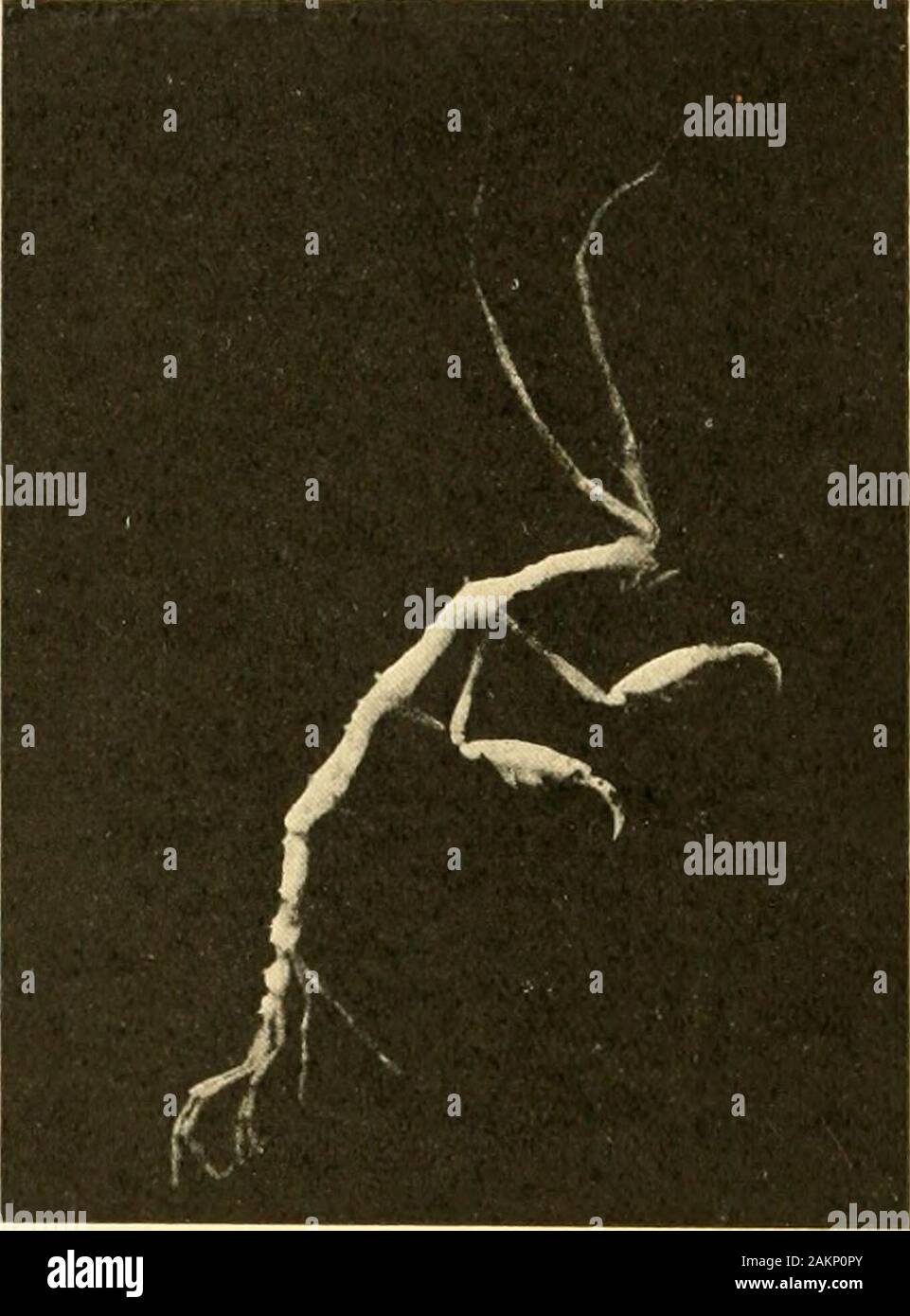Guide to the Crustacea, Arachnida, Onychophora and Myriopoda exhibited in the Department of Zoology, British Museum (Natural History) .. . bdominal appendages are not respiratory, and there are gill-plates attached on the inner side of the bases of some of thethoracic limbs. The Amphipoda are grouped under three Sub-orders. In the Sub-order Gammakidea are included the typical Amphi-poda, in which the body is more or less stout, the abdomen welldeveloped, and the eyes generally small. The most familiarmembers of this Sub-order are perhaps the Sandhopper, Talitrussaltator, and the Shorehopper, O

Image details
Contributor:
The Reading Room / Alamy Stock PhotoImage ID:
2AKP0PYFile size:
7.1 MB (234.3 KB Compressed download)Releases:
Model - no | Property - noDo I need a release?Dimensions:
1359 x 1837 px | 23 x 31.1 cm | 9.1 x 12.2 inches | 150dpiMore information:
This image is a public domain image, which means either that copyright has expired in the image or the copyright holder has waived their copyright. Alamy charges you a fee for access to the high resolution copy of the image.
This image could have imperfections as it’s either historical or reportage.
Guide to the Crustacea, Arachnida, Onychophora and Myriopoda exhibited in the Department of Zoology, British Museum (Natural History) .. . bdominal appendages are not respiratory, and there are gill-plates attached on the inner side of the bases of some of thethoracic limbs. The Amphipoda are grouped under three Sub-orders. In the Sub-order Gammakidea are included the typical Amphi-poda, in which the body is more or less stout, the abdomen welldeveloped, and the eyes generally small. The most familiarmembers of this Sub-order are perhaps the Sandhopper, Talitrussaltator, and the Shorehopper, Orckestia (jammarellus. These two 46 Guide to Crustacea. Table-case species are exceedingly common all round our coasts. They are° almost terrestrial in their habits, burrowing in the sand above high-water mark, and sometimes at a little distance from the sea.The two are often found together, and it is perhaps incorrect toimply that they are distinguished in popular speech, but Talitrusis stated to be more common on sandy beaches, while Orchcstiais often found among rocks. More typical representatives of the Gammaridea, however, are. Fig. 28. Acgina spinosissima, one of the Caprellidae, slightly reduced.[Table-case No. 7.] the numerous species of Gammarus, of which some live in the seaand others, like the very common Gammarus pulex of this country, in fresh water. Specimens and a drawing of Gammarus locusta(Fig. 27) are shown in this case and a coloured drawing of thesame species, from life, is hung in Wall-case No. 6. Of the other Gammaridea exhibited, it need only be said thatsome, like Eurythenes gryllus and Stegocephahis avipulla, showthe large size reached by some species in Arctic Seas, where theyswarm in extraordinary profusion; that Acantliogammarus god-lewskii is one of a host of remarkable species, all closely related lloplocayida—Stoniafopoda. 47 to the common GainniaiHs, found in Lake Baikal; and that the Table-caselittle Chclura terebrans is, of all Amphipoda, per